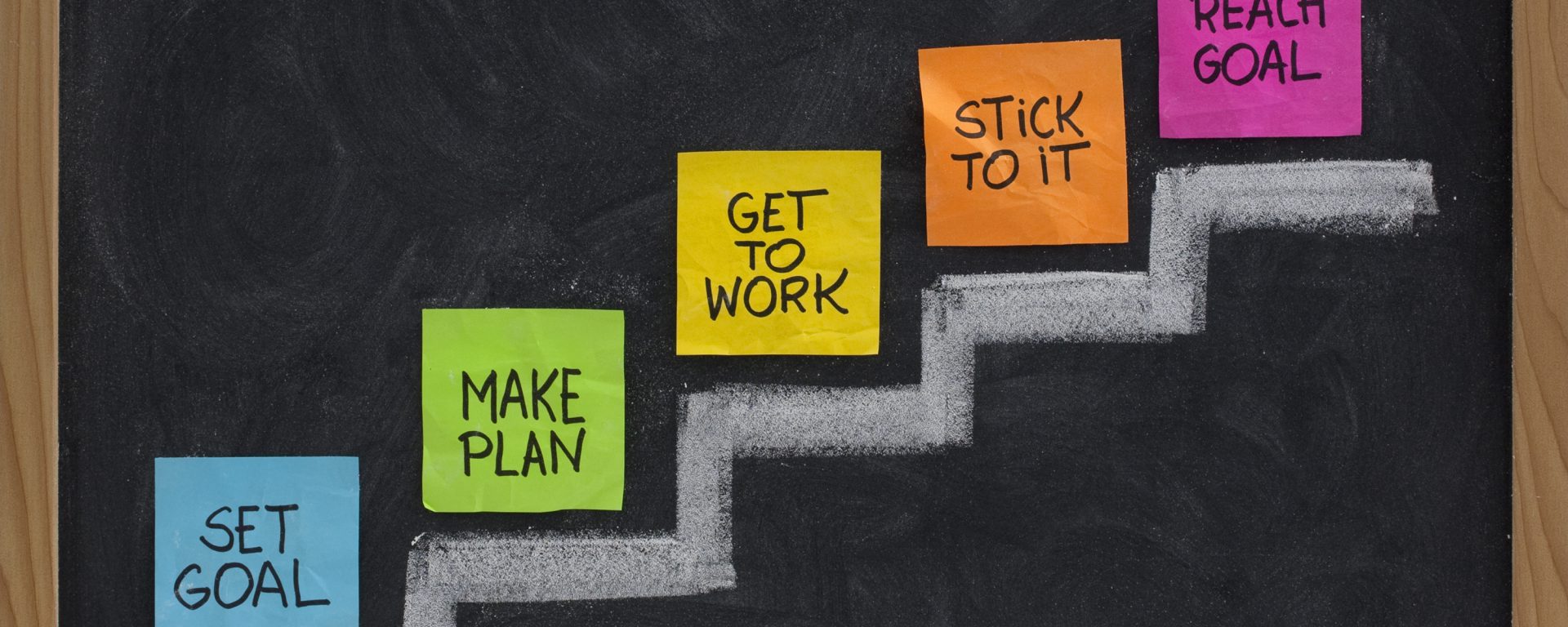How to Keep at it When Instant Gratification is King
By Callie Verderosa
The new year is a natural time to set (and reset) goals, whether personal, professional, a new hobby, a new fitness endeavor, the book we keep meaning to write, or the promotion for which we keep dreaming of applying. At Plaid, we use the new year to reconnect with partners on their desired outcomes for the year and help them strategize on collaboration for goal achievement.
You may have already established goals for yourself this year and are well on your way to achieving those. If you haven’t, that’s ok. What’s just as necessary (especially as we enter week five of the new year), is how to stay motivated to achieve goals, even when it gets challenging.
Here are a few ways double down on the goals you’ve set this year.
Set goals in the positive.
You may have your goals set in stone already. Great. Keep it up. If you haven’t, focus on setting goals in a positive direction that steer toward the desired outcome, not the things you don’t want.
If the goal is to lose weight, try flipping the focus of the goal on what is gained instead of lost. So, what are you looking to gain by losing weight? A healthier lifestyle? A certain muscle mass or body fat percentage? By switching the goal to the positive, the focus becomes stronger on what should be achieved. This creates a space for you to manifest that desire by spending time focused on habits that get you where you want to be instead of where you don’t.
Make your goals SMART.
At Plaid, SMART goal setting is a tool we use with clients to guide thoughtful goal setting for focused and streamlined achievement. When a goal is SMART it means that it is Specific, Measurable, Attainable, Relevant and Timely. Participating in SMART goal setting creates meaningful goals and an outlined action plan for follow through.
If the goal is to have a healthier lifestyle, use each letter of the mnemonic device SMART to pause and assess how to make your goal specific, measurable, attainable, relevant and timely. By doing this, time is intentionally spent on all variables of the goal, so that the goal can become a reality instead of putting it off for another year.
Develop habits.
There are times when a goal may seem overwhelming (like, living a healthier lifestyle). One way to make it more manageable is by breaking down the goal into small habits (or smaller goals, if you will) that allow for focus on each day, or week, that moves towards goal achievement.
If the goal is to have a healthier lifestyle, what are the small habits that can be added to a daily schedule? Adding more protein into your diet, going on a daily walk, or stretching every night before bed? Consider those things that contribute to the goal that’s set.
Hold yourself accountable.
The goal is only as good as the accountability measures in place to ensure it’s achieved. When a goal is determined, a good habit is to immediately create accountability measures in weekly, or monthly increments.
If the goal is to have a healthier lifestyle, what accountability measures work for you, and for the time allotted for goal completion? Is it a recurring check in with a trainer every two weeks on your progress, or a reward for reaching a milestone? Or, a calendar that visibly showcases progress towards the goal, that allows for checking off a habit every day? When accountability measures are in place, there’s less chance to veer off the path of completion and forget about the goal a month or two into your hard work.
Goals provide direction. Goals act as a filter to decide what gets done now, and what gets done later. Goals benchmark success. But, goals can’t be reached if there is only a focus on the end, without outlining how to stay motivated, accountable, and overcome the distractions along the way.

